
Its History, Legends and Lore / by Dorothy V. Corson

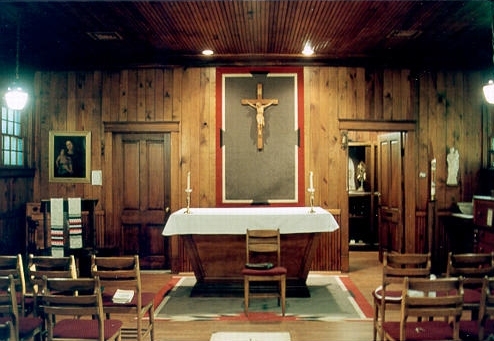
At four o’clock in the afternoon, on the same day Sorin’s statue was unveiled, there occurred a more somber ceremony, the interring of the remains of Rev. Stephen Theodore Badin, the first priest ordained in the United States.
As the remains were solemnly brought into the church the choir of seminarians sang with fine expression the Miserere in harmonized plain chant and at the end of the service the Benedictus.
Again there was the same formal procession from the church, this time to the log chapel on the bank of St. Mary’s Lake, the humble house of God about which will forever cling the memories of the earliest and saintliest missionaries of the West whose venerable ashes were here peacefully laid to rest
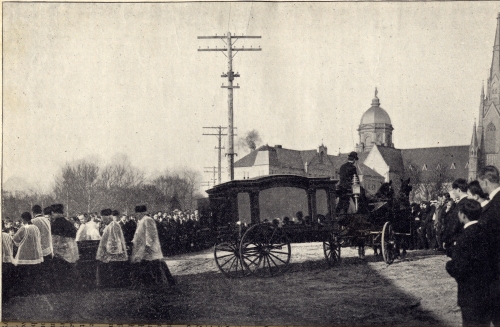
The chapel had been formally opened at half-past five in the morning when the Very Rev. Provincial, Father Zahm celebrated Mass there in the presence of venerable religious of Holy Cross, the remnant of the old guard that had fought the good battle for Notre Dame. The altar, be it remarked, on which the Mass was celebrated was the same altar at which Father Badin himself had so many times offered up the Divine Sacrifice. Around the walls of the Log Cabin hung the cloths that made up the canopy under which the zealous missionary was wont to bear the Blessed Sacrament in procession; these are the strips of heavy red stuff, decorated with sacred symbols wrought in white beads, evidently the work of the Indians. The candles at the end of Mass were put out with the same extinguisher that Father Badin used, while the candelabra were also relics of the proto-priest. They are of peculiar make, evidently designed by Father Badin to gratify his dear Indians; the main stem of each candelabrum is composed of an Indian chief in brass holding the bowl for the candle.
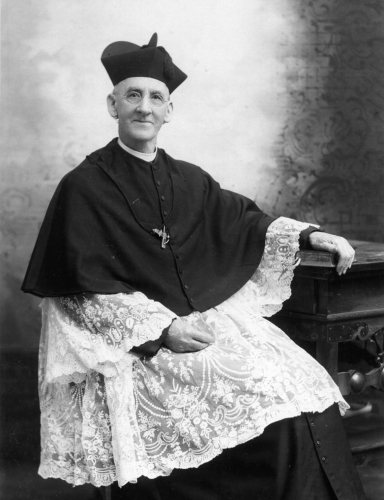
But aside from these treasured relics there were other and greater links with the past. Father L’Etourneau, C.S.C., who grew young in the celebration of the day, relates that when he was a boy he was Father Badin’s server. The significance of this fact when we come to examine it is immense. It binds three centuries together; it epitomizes in a marvellous manner the development of the Church in the United States. From 1793, the date of Father Badin’s ordination, to 1906 is a long span but it is made in the person of Father L’Etourneau who served the eighteenth century priest and lives to relate it to the ears of the twentieth century. It would be a thing of rare interest, did space permit it, to contrast the present of the Church with that remote past, the day of the score of priests with the day of the fifteen thousand, the time of the handful of the faithful with the time of the twelve millions and a half. A study of the question would doubtless bear out the statement that the history of Christianity records no such development of the Church within the life of two men as has taken place in our own country during the lifetime of Father Badin and Father L`Etourneau.
There was also present at the interment of Father Badin’s remains a venerable religious of the Sisters of the Holy Cross, Mother M. Compassion, who also knew Father Badin very well and had herself lived in the attic of the original log chapel which was built in 1831.
Father L`Etourneau's account of his early pioneer life was published in The Sunday Chronicle in Chicago on September 10, 1899. Following are excerpts from that fascinating detailed article which is preserved in the Notre Dame Archives:
Father L`Etourneau, was a boy of 16 when he became a student at Notre Dame which then had only 20 students. Later he entered the Bishop’s Seminary in 1852 and remained there for two years. In 1854. he wrote to Fr. Sorin asking if he could return and Sorin replied that if he would come back at once he would send him to Rome where he was ordained a deacon. In 1857 he returned to Notre Dame accompanied by Father Basil Moreau, who had decided to visit Notre Dame. He was ordained a priest the same year.
In later years, he described the campus upon his arrival at age 16: "The college consisted of but one building, hemmed by a dense forest. Many Indians lived in the vicinity, but they were a peaceable, God-fearing set, having been Christianized years before by the illustrious missionary; Father Allouez, and their faith revived in 1826 under Father Badin, the first ordained priest in the United States and his successor, Father Louis Deseille."
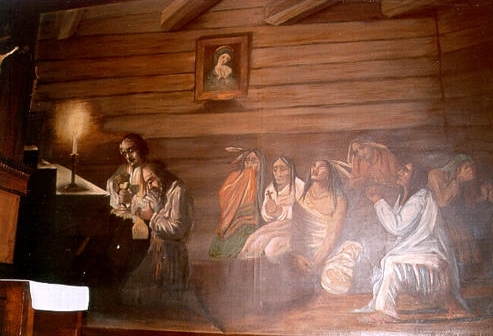
The story of Father Deseille'S heroic death in 1838 was at the time of Father L`Etourneau’s arrival still fresh in the minds of people and thus his version bears repeating: "The saintly missionary was a native of Belgium and came in the early thirties to the mission fields of Indiana. A little log church had been built by his predecessor, Father Badin, on the shores of St. Mary’s Lake at Notre Dame, and here Father Deseille used to offer the sacrifice of the mass. He also conducted other missions in northern Indiana and southern Michigan and it was while on his mission in 1838 that he one day announced to his congregations that they would see him no more in this world, though he was still young and full of health and vigor. The Indians by whom he was so deeply loved and reverenced wept bitterly at the startling prophecy and begged their faithful “Black Robe” (by which name he was known to them) to remain in their midst."
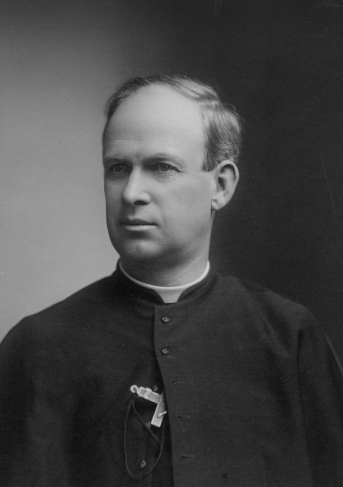
"Singularly, a few days after his return from his missions, he was taken violently sick. Realizing that he was dying having no priest to assist him, he dragged himself from his bed and out of his hut across the frozen ground to the little chapel by the lake, where he managed to ascend the altar steps. With fast departing strength he seized the ciborium, administered the visticum to himself, then stagger down the steps again and expired at the foot of the altar, where he was found the following morning by some faithful Indians, who had come to the church. . . . The news spread rapidly among the grief-striken Potawatomies, and they came in large numbers to look upon the remains of their dear "black robe." He was buried under the altar of his little log church, according to his own desire, but the remains were afterward removed to the Church of the Sacred Heart at Notre Dame where they now rest under the main altar of the famed edifice, built on the spot made holy by his labors."
[Father Theodore Hesburgh upon his retirement in 1988, decided it would be more appropriate to move them to the Log Chapel because they were associated with Badin’s early mission at Ste.-Marie-des-Lacs. It was the last thing he did before he retired as President of the University.]
The history of Father Badin’s connection with Notre Dame is well known; not less interesting, but decidedly more novel, is the story of how his remains came to be transferred to this home of his heart. Shortly before the aged missionary’s death, while on a visit to Notre Dame, he made a special request of Father Sorin that a little log house might be built for him on the shore of St. Mary’s Lake where he might live out his days in peace. At that time, Father Sorin was unable to satisfy his wishes; he had no Brother whom he could give the venerable priest as a nurse. Father Badin returned to Cincinnati where he shortly passed away in 1853. He was honored with interment in the cathedral. The “old Indian Chapel” burned down in 1856.
It was not long till Father Sorin, knowing what was the will of the saintly departed in the matter, requested Archbishop Purcell for the remains of Father Badin that he might remove them to Notre Dame. Archbishop Purcell objected on the ground that the proper resting-place of Father Badin was in the cathedral of the diocese in which he was Vicar-General.
In the fall of 1905 Father Cavanaugh, together with Father Zahm determined to build a replica of this chapel on the site of the old one. Father Corby as Provincial made the same request of the Archbishop of Cincinnati without persuading him to his point of view. It was not till the Very Rev. Provincial Father Zahm, went in person to Cincinnati and stated his case with all the force of eloquence the subject permitted that Archbishop Elder consented to the removal of the remains of Father Badin to Notre Dame.
Builders of the genuine old-style log-cabin were becoming rare in the Middle West. Considerable inquiry was made before a competent architect could be secured in the person of Mr. Arnett who, an ex-slave, an old man in the days of the war, still could wield the broadax as vigorously as a man of fifty. Under his superintendence, the chapel was ready to receive the remains of Father Badin.
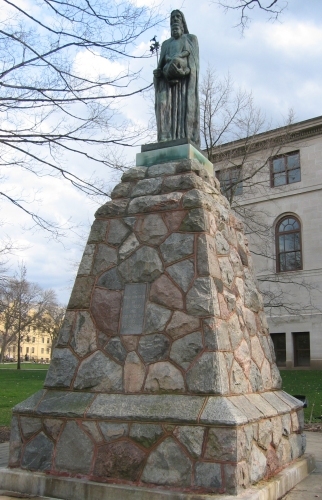
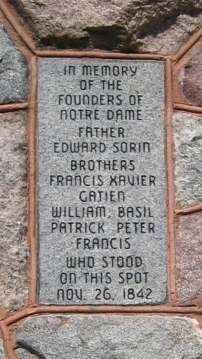
The November 25, 1905 Notre Dame Scholastic recorded this description of the newly finished Log Chapel in their Local Items: “Near the site of the old log-cabin a pedestal twelve feet in height for a statue of St. Joseph seven feet high is being constructed of irregular pieces of stone. There will be electric lights around it for illumination at night. It is quite fitting that a statue of St. Joseph, the patron of the six Brothers who came here with Father Sorin, should be close to the scene where those heroic men led laborious lives for God and men."
Then on January 20, 1906 the Notre Dame Scholastic reported: “The log-cabin is almost finished. The logs, which have been made smooth on the outer and inner sides, are wedged together at the ends. The space between the logs has been filled with clay. The length of the cabin is about forty-five feet; its width twenty-five, and the height of the walls twelve feet. There are two small windows on both sides and a door in front. The roof is of clapboards. An ex-slave is superintending the building of the cabin, and he says he will make it look like “the real old-fashioned log-cabins.”
On May 3, 1906 when the Founders Monument was blessed, Father Louis L`Etourneau and Bro. Augustus were the only men living at that time that had watched uninterruptedly the steady growth and development of Notre Dame University since its inaugural year. On that same day the remains of Father Badin were deposited beneath the floor of the little church under a marble slab with an appropriate epitaph. One felt that a duty had been reverently performed, a sacred office holily fulfilled, when the Paters and Aves rose from the thousand hearts for the repose of the venerable missionary’s soul. Father L`Etourneau died on October 19, 1910. As a young priest he inherited considerable wealth from his parents. It was entirely devoted to charity. One of his gifts to Notre Dame was Corby Hall.
Accordingly, the afternoon of May 3, 1906, Notre Dame witnessed one of the most striking cases of “poetic justices” to be found in the history of the Catholic Church in the United States, when Father Badin was given his little log house—which is at the same time the house of God—on the banks of St. Mary’s Lake where he might rest in peace.
This double ceremony ended a day that for splendor of pageant, for depth of religious significance, for height of holy jubilation will be unique in the annals of Notre Dame and the Church in the United States. -- Notre Dame Scholastic, Vol. 39, pages 491-493.
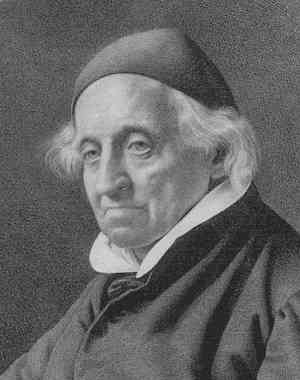
November 30, 1842 marked Father Sorin’s first Mass at Notre Dame. He offered the divine mysteries in a rude chapel in a log cabin, which was the only structure standing on these grounds in the midst of a mighty forest of oaks. What a wondrous transformation has been wrought since, and that within the limits of a lifetime.
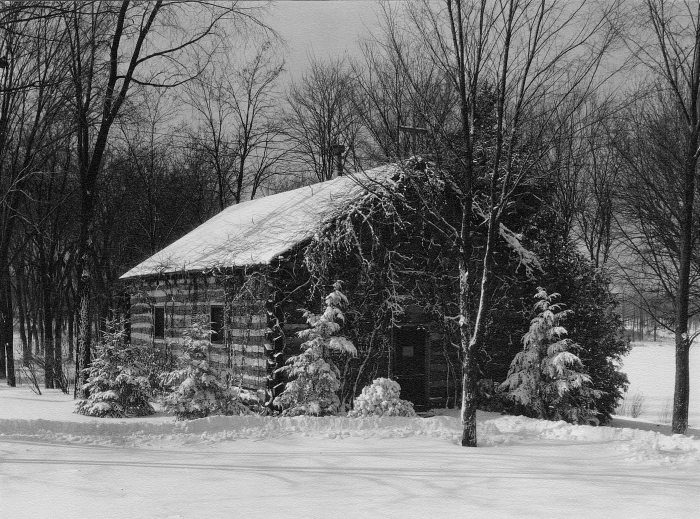
|
Notre Dame du Lac
December 5, 1842
Beloved Father, |
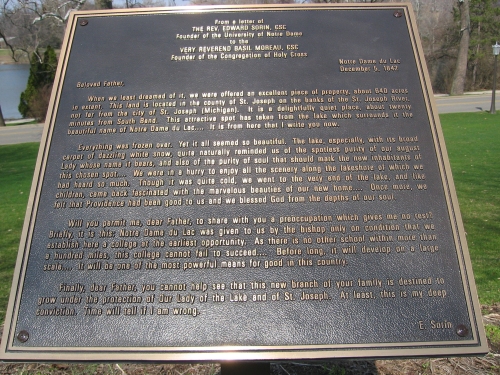
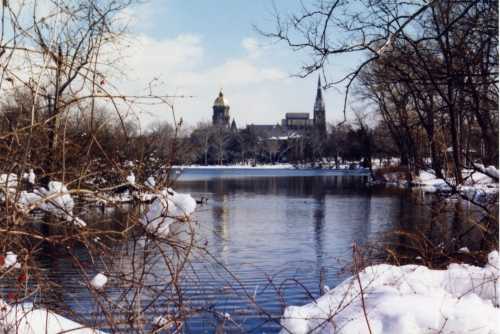
<< back | The Spirit of Notre Dame | next >>